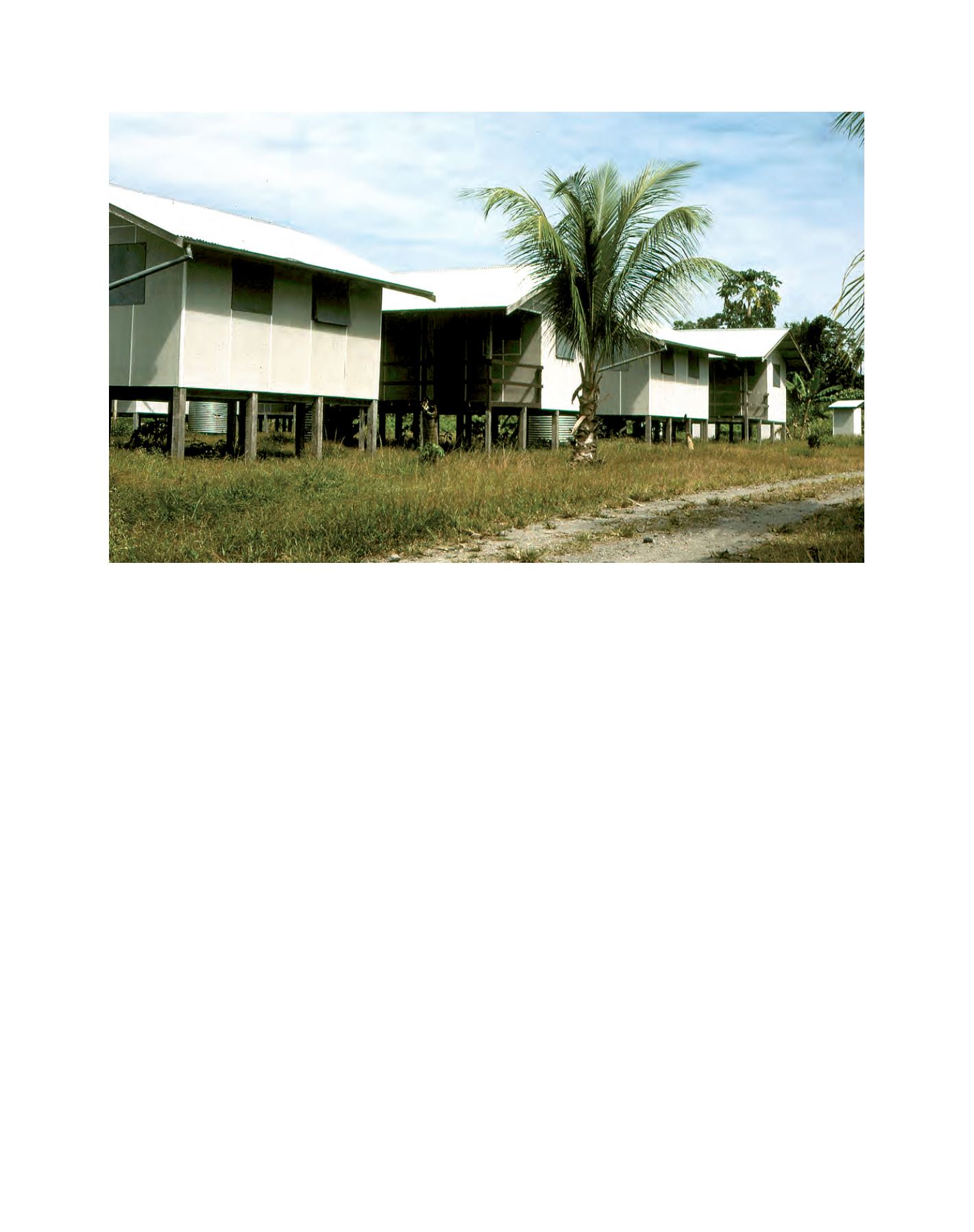

[
] 52
T
he
I
mpacts
and
I
mplications
of
C
limate
C
hange
and
V
ariability
the Maldives has initiated a regional planning policy of consolida-
tion of government services. Instead of providing a range of services
on all inhabited islands, a wider range of services is provided on a
smaller number of more highly populated islands in order to reduce
government costs. People on more remote and sparsely populated
islands will be accommodated on the destination islands, where
the increased number and density of people makes services more
economically viable. Forced relocation was never a part of this
plan.
8
As the Indian Ocean tsunami occurred during this planning
process, it also became necessary to identify safe islands that were
less vulnerable to surges and destructive waves. Thus, anticipation
of climate change and rising sea levels has influenced a planning
process that was initially concerned with a more efficient provision
of government services, in a country with limited resources.
The Tulun (Carteret) islanders in Papua New Guinea have been
labelled by the media as the world’s first climate change refugees,
but it must be acknowledged that their own non-governmental
organization leader has also used the issue to publicise their plight.
Throughout 2009, families started relocating to resettlement sites
on the mainland of Bougainville. This is a resettlement that began
many decades ago. Colonial government officers first identified a
population and resource crisis in the Carteret Islands during the
1960s.
9
By the early 1980s, the government of the North Solomons
province, which contains Bougainville and the Carterets, drew up a
policy paper identifying problems including storms, erosion, popu-
lation pressure, and food shortage affecting the Carteret, Mortlock,
Tasman and Nissan islands. In response to this, a resettlement site
was designed and built at Kuveria in Bougainville. Carteret island-
ers first started relocating in 1984, because their population and
resource crises were the most extreme. This scheme continued
until 1987, when civil war broke out on Bougainville.
However, Tulun families had already by that time begun
to drift back to their original homeland.
10
The civil war
and loss of all services sealed their desire to return
home. The population and land crises in the Carterets
did not change, and as peace returned to Bougainville a
new resettlement scheme was developed. Adaptation to
this new site will prove just as dramatic this decade, and
provincial government funding is much less generous
than it was in the 1980s. Thus, the experience of the
Carteret islanders constitutes a lengthy environmental
crisis that began with population pressure and has been
exacerbated by the more general erosion of the very
small low-lying islands.
11
Migration can be interpreted as a response of individ-
uals and communities to the negative impacts of climate
change, but it takes place within the complex dynamics
of social change, population increase, raised expecta-
tions and environmental degradation. Where survival
is seriously compromised, as in the Carteret islands, a
formal resettlement scheme will assist the population to
retain its identity and culture, albeit in a transformed
state. It is important that such group migrations are
well supported and closely monitored, as the social
impacts need to be clearly understood if much larger
populations have to be relocated in the future. In the
meantime, it is important to recognise that communi-
ties face a complex range of hazards and environmental
and economic issues in which climate change is one of
many factors.
The Carteret Village at Kuveria Atolls Resettlement Scheme, Bougainville in 1987
Image: David King
















